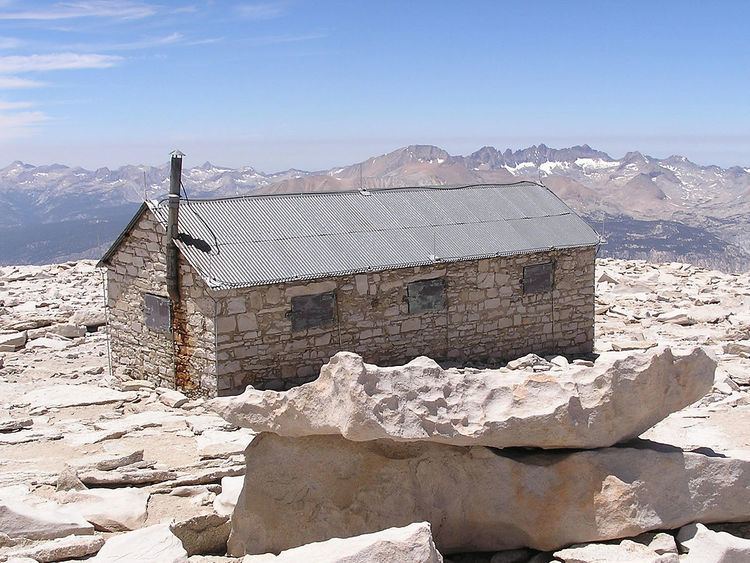Architectural style Rustic architecture Opened 1909 Added to NRHP 8 March 1977 | Built 1909 NRHP Reference # 77000119 Area 30.66 m² | |
 | ||
Architect Arch, Speiden & Speiden Address White Mountain Ranger Station, California 93545, USA Similar Sierra Nevada, Redwood Meadow Ranger S, Squatter's Cabin, Hockett Meadow Ranger S, Mount Whitney Trail | ||
The Smithsonian Institution Shelter, also known as the Mount Whitney Summit Shelter, was built in 1909 on the summit plateau of Mount Whitney, in the Sierra Nevada within Sequoia National Park, in California.
Contents
History
The shelter at the summit was proposed after Byrd Surby, a U.S. Fisheries employee, was struck and killed by lightning on the summit in 1904. The shelter was built to house scientists who used the 14,505-foot summit to study high-altitude phenomena in the time before sustained high-altitude flight was possible.
In 1909 the site was used by Smithsonian Astrophysical Observatory director Charles Greeley Abbot to conduct spectroscopic observations of Mars to investigate the existence of water on the planet. Other studies included observations of cosmic rays and nocturnal radiation.
Although the structure was built in part as a shelter from storms, hikers are now warned against seeking shelter there during lightning storms.
Landmark
Gustave F. Marsh, the builder of the summit trail, built the shelter with funding from the Smithsonian Institution, with assistance from the Lick Observatory. The mortared granite shelter comprises three rooms in a line with windows in each and doors in the north and south rooms. The roof is corrugated metal on a steel truss frame. The shelter has a log book for all hikers to sign when they make it to the summit of Mt. Whitney. The site has been considered for National Historic Landmark status, but has not been recommended for submission yet. However, in 1977 the Smithsonian Institution Shelter was placed on the National Register of Historic Places.
